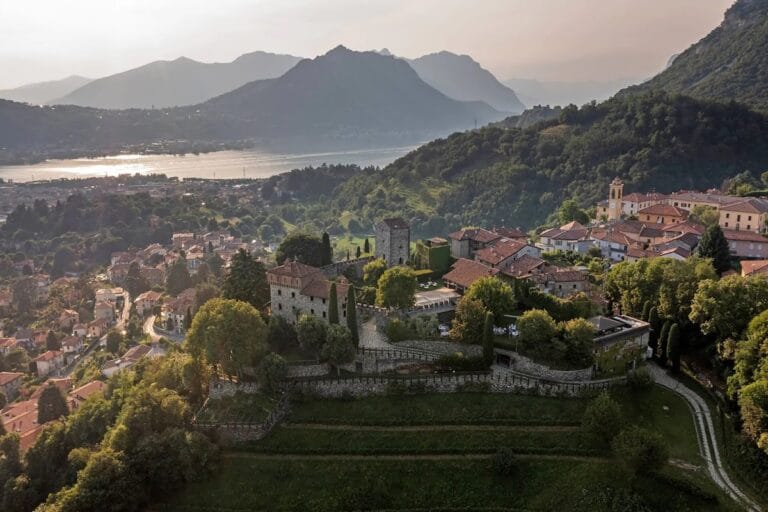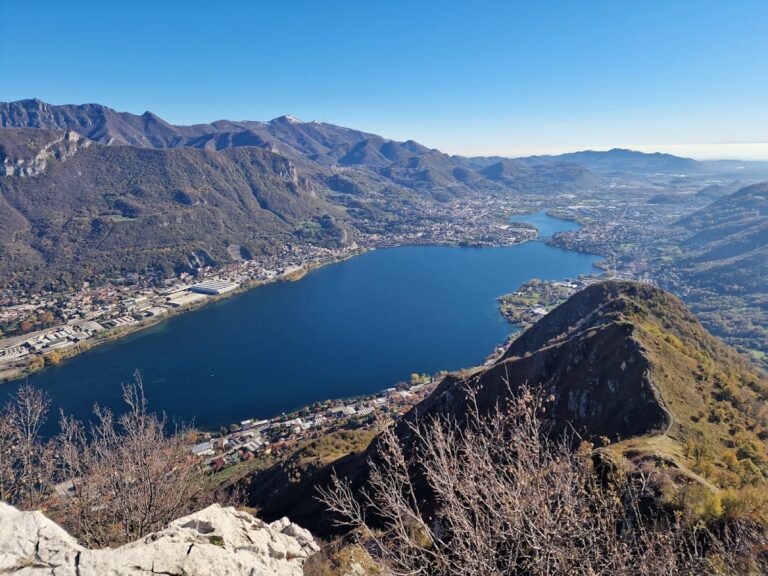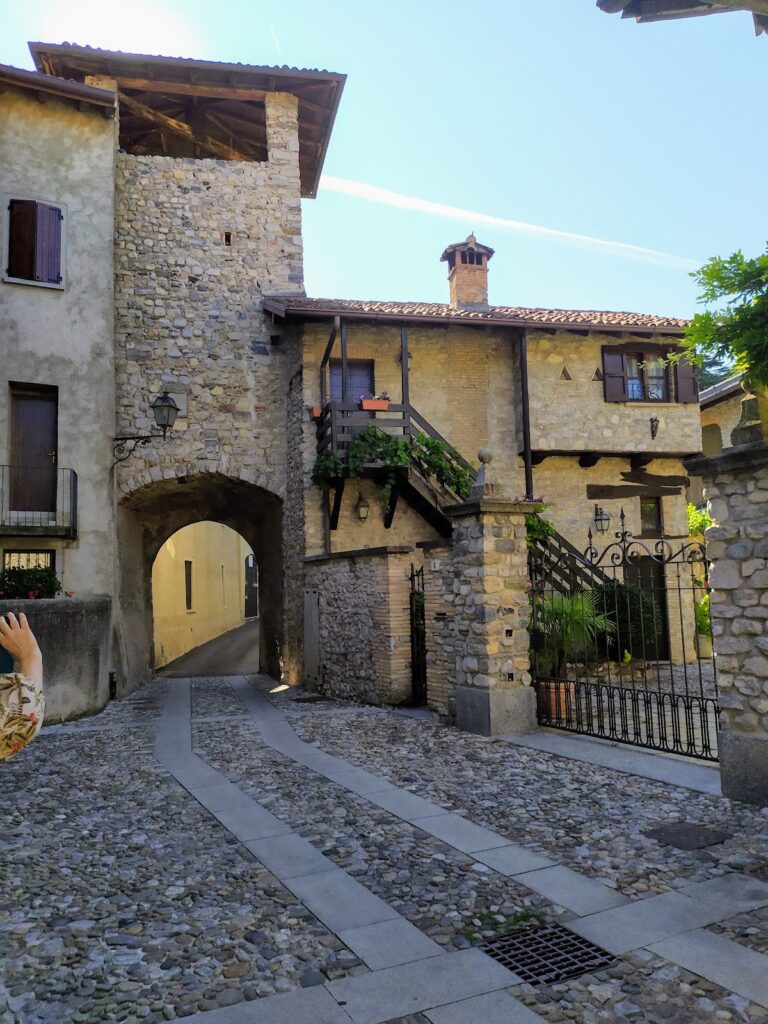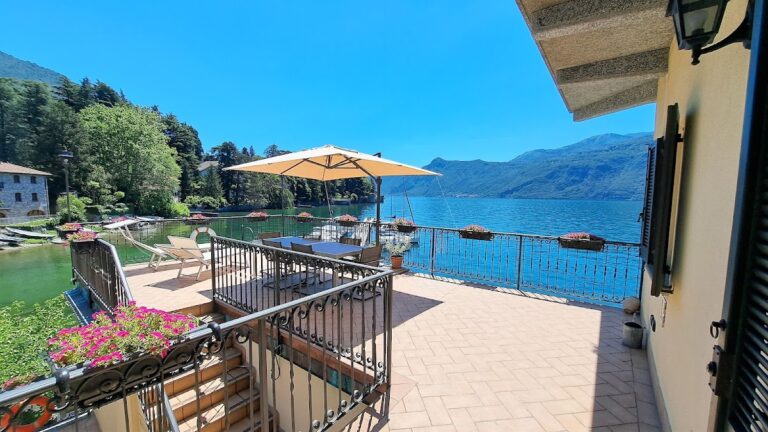Castle of the Unnamed: A Medieval Fortress in Vercurago, Italy
Visitor Information
Google Rating: 4.5
Popularity: Medium
Google Maps: View on Google Maps
Official Website: www.santuariosangirolamo.org
Country: Italy
Civilization: Unclassified
Remains: Military
History
The Castle of the Unnamed is located in the municipality of Vercurago, Italy. This medieval fortress originated in the 13th century but stands on a site with much older human presence, originally established by the Golasecca culture during the Iron Age.
Early archaeological findings show that from the 5th century BCE, the area was a settled community engaged in trade networks until the 4th century BCE when invasions by Gallic tribes led to its abandonment. Centuries later, in the medieval period, the castle emerged as a stronghold of the Benaglio family, who served as vassals to the Della Torre family of Milan. Its commanding position on the Tremasasso height allowed control over the surrounding waterways and land routes, making it a valuable strategic asset on the contested borderlands between various political powers.
Following the Peace of Lodi in 1454, the fortress became part of the Republic of Venice’s territories. During the Middle Ages, the castle was a focal point in the recurrent conflicts between the Guelf and Ghibelline factions, including a period in the early 15th century when it fell under occupation by the Malatesta family. Its military relevance led to repeated confrontations and damage, notably in 1509 when French and Brianzole troops under Carlo II d’Amboise inflicted heavy destruction.
The castle suffered further devastation in 1799 during the campaign of Russian General Alexander Suvorov in Italy. After its military importance waned, the site took on a religious character from the 16th century onward. In 1534, San Girolamo Emiliani founded a school and charitable institutions within the fortress walls. By 1628, ownership transferred to the Somascan Fathers, who integrated the castle into the nearby Sacro Monte di Somasca religious complex.
Locally, the castle is known by its historical name, Rocca di Vercurago, and has long been associated with the fictional home of the mysterious figure called the Unnamed in Alessandro Manzoni’s 19th-century novel I Promessi Sposi. This literary connection has been recognized since at least 1830 and is supported by both local tradition and critical studies.
Restoration efforts during the late 19th and throughout the 20th centuries, including the rebuilding of the chapel of Sant’Ambrogio and the main tower, have preserved its ruins. Since 2017, the castle has hosted an exhibition dedicated to its layered history and cultural role.
Remains
The castle stands prominently atop the Tremasasso promontory, a limestone formation about 200 meters above the surrounding landscape. This location creates a narrow passage bordered by rock and lake, historically controlling access along the Adda River and nearby lakes.
Approaching from the lower valley known as La Valletta involves ascending a staircase of approximately 150 steps cut directly into the rock. Designed in 1898 by the architect Don Antonio Piccinelli, this stairway follows the route of an original medieval path. An alternative path called the “via di sass” offers an older access route circumventing the nearby Sacro Monte di Somasca.
At the castle’s entrance, a boundary stone dating from the 18th century once marked the frontier between the Republic of Venice and the Duchy of Milan. Today, it signifies the modern administrative border between Vercurago and Lecco. Adjacent to this area is the chapel of Sant’Ambrogio, originally built in medieval times but reconstructed in 1895 by Piccinelli in a neo-Romanesque style. The chapel’s rectangular layout ends in a rounded apse. Its façade, made of stone, is decorated with ten brick arches and features a round window above the entrance, which is topped by a fresco depicting the Madonna. The wooden truss roof is crowned by a cement statue of San Girolamo Emiliani. A bell known as “Ambrogia,” cast in 1902 by Milan’s Barigozzi foundry, hangs on the chapel’s right side.
Inside, the chapel reveals exposed stone walls decorated with two frescoes painted in 1895 by Antonio Sibella. These depict Saint Ambrose enthroned and San Girolamo Emiliani, accompanied by an inscription commemorating San Girolamo’s restoration work of the site in 1534.
The reconstructed main tower rests on the castle’s original foundations and was erected beginning in 1897. Standing about 8 meters tall, it is built from local stone designed to evoke a partially ruined medieval appearance, following neo-Gothic architectural style. The tower was inaugurated in 1898 and later converted in 1900 into the eleventh chapel of the Sacro Monte di Somasca. Within, cement statues created by Eugenio Goglio portray the miracle of the multiplication of loaves by San Girolamo Emiliani. These works were installed in 1901 and formally unveiled in 1902.
Along the castle’s left perimeter wall, parts of the original masonry remain. This section bears evidence of cannon fire damage dating back to the 1799 Russian military campaign. The wall stands at roughly 1.10 meters in height in some places, showing the endurance of the defensive structures through centuries of conflict.
Within the grounds stands a large iron cross, known as a crocione, dating from the late 19th century. This monument was dedicated by the local Alpini mountain troops in 1979 to war chaplain Giovanni Battista Pigato. It replaced earlier wooden crosses that can be traced to the 15th century and was fitted with electric lighting in 1949 and again in 1987.
Together with these features, the castle integrates into the religious complex of the Sacro Monte di Somasca, with the chapel of San Girolamo Emiliani housed inside the reconstructed tower. The site’s preservation encompasses restored chapels, reconstructed defensive elements, and memorial monuments that collectively reflect its military past and later religious significance.










